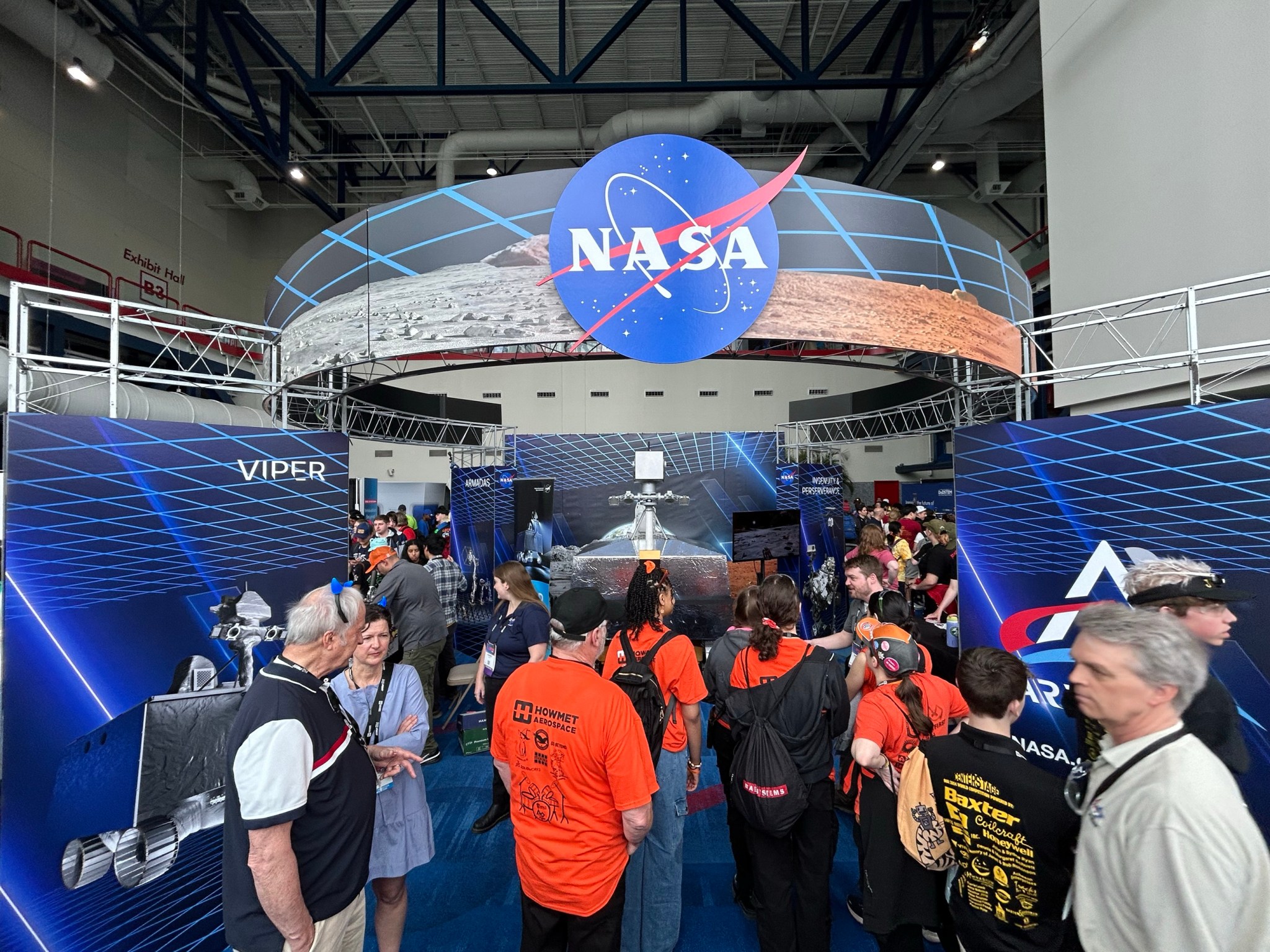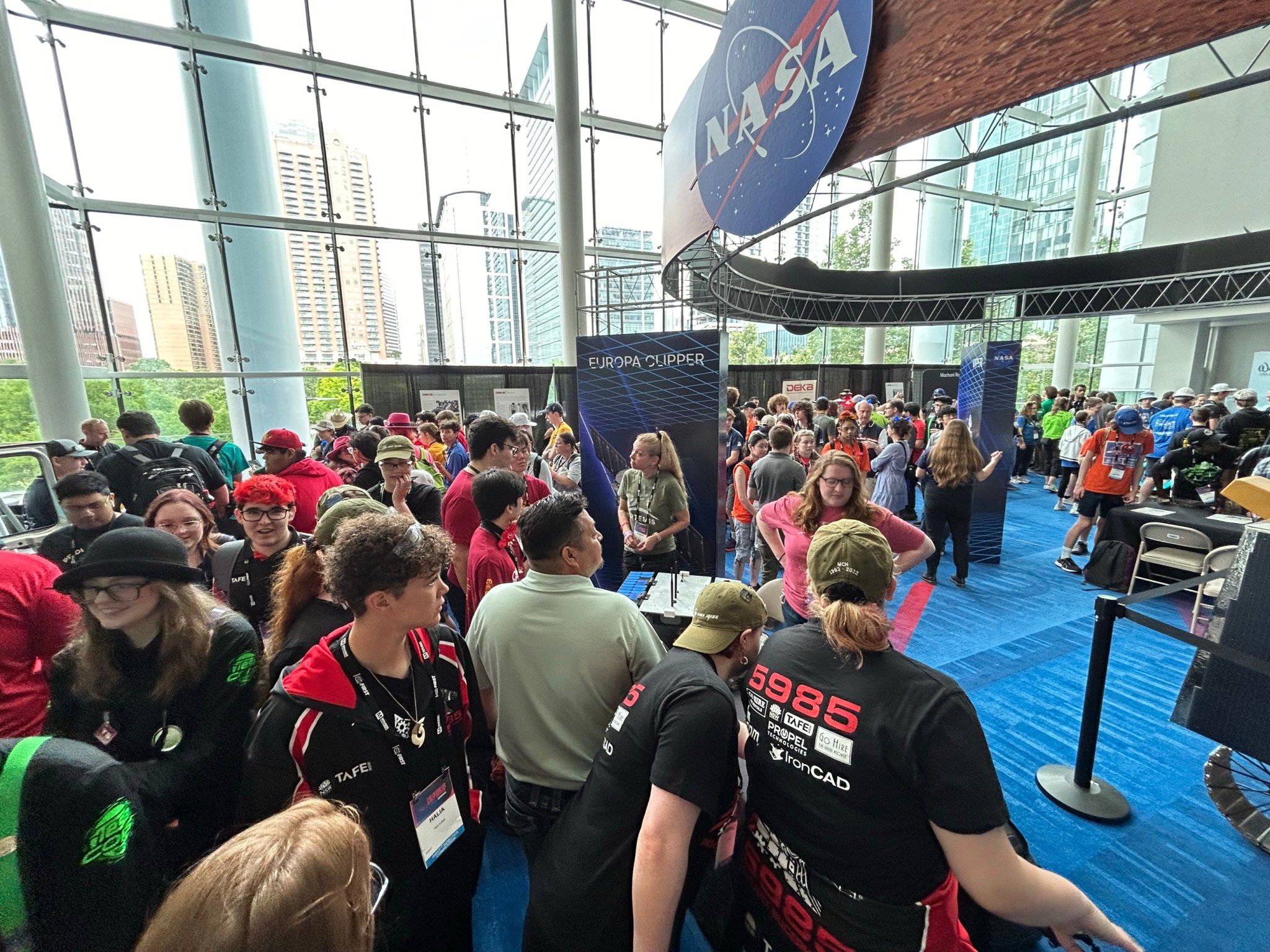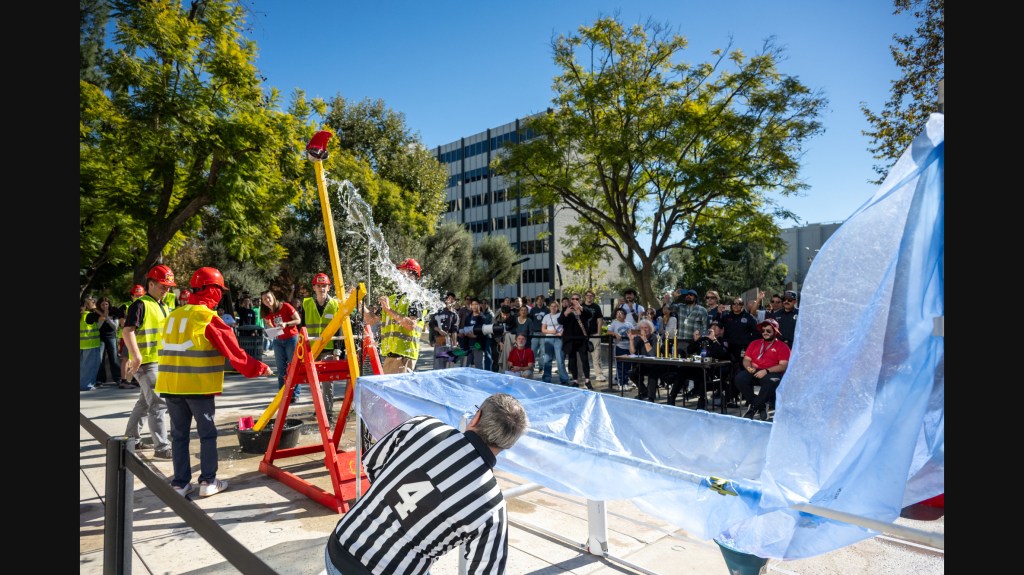NASA engaged with fans, student robotics teams, and industry leaders at the 2024 FIRST Robotics World Championships held April 17-20, at the George R. Brown Convention Center in Houston. The exhibit highlighted the future of technology and spaceflight, attracting over 50,000 participants from across the United States and worldwide.
The FIRST Robotics World Championships was established in 1992. Since relocating to Houston in 2017, the event has featured significant involvement from NASA, which annually supports and mentors more than 250 robotics teams, from elementary to high school levels.
The 2024 championships celebrated the integration of arts into STEM (science, technology, engineering, and math), empowering students to create a world of endless possibilities with big ideas, bold actions, and creativity.
Multiple NASA centers participated in the event including the Johnson Space Center, Armstrong Flight Research Center, Ames Research Center, Glenn Research Center, Goddard Space Flight Center, Katherine Johnson Independent Verification and Validation Facility, Kennedy Space Center, Jet Propulsion Laboratory, Langley Research Center, Michoud Assembly Facility, and Stennis Space Center.
The NASA exhibits offered a platform for engaging discussions about the agency’s latest projects, including the X-59 supersonic plane, the Automated Reconfigurable Mission Adaptive Digital Assembly Systems, the Volatiles Investigating Polar Exploration Rover, Mars Perseverance Rover and Ingenuity Helicopter, Cooperative Autonomous Distributed Robotic Exploration, Exobiology Extant Life Surveyor, and the Europa Clipper mission. These interactions provided a firsthand look at NASA’s groundbreaking science and technologies and their potential to benefit all humanity.
“The energy during the event was phenomenal. It’s inspiring to see so many people passionate about robotics and eager to solve complex problems,” said Johnson Public Affairs Specialist Joseph Zakrzewski. “We are excited to unite tomorrow’s leaders from all corners of the world.”
The event also fostered discussions about STEM career opportunities, with many students expressing their aspirations to join the space industry.
As the championships drew to a close, the excitement was palpable, with students and mentors alike looking forward to the next season. With a successful turnout and the enthusiastic involvement of teams, sponsors, volunteers, and supporters, the future of STEM education appears brighter than ever.
from NASA https://ift.tt/2he7Afo




No comments:
Post a Comment